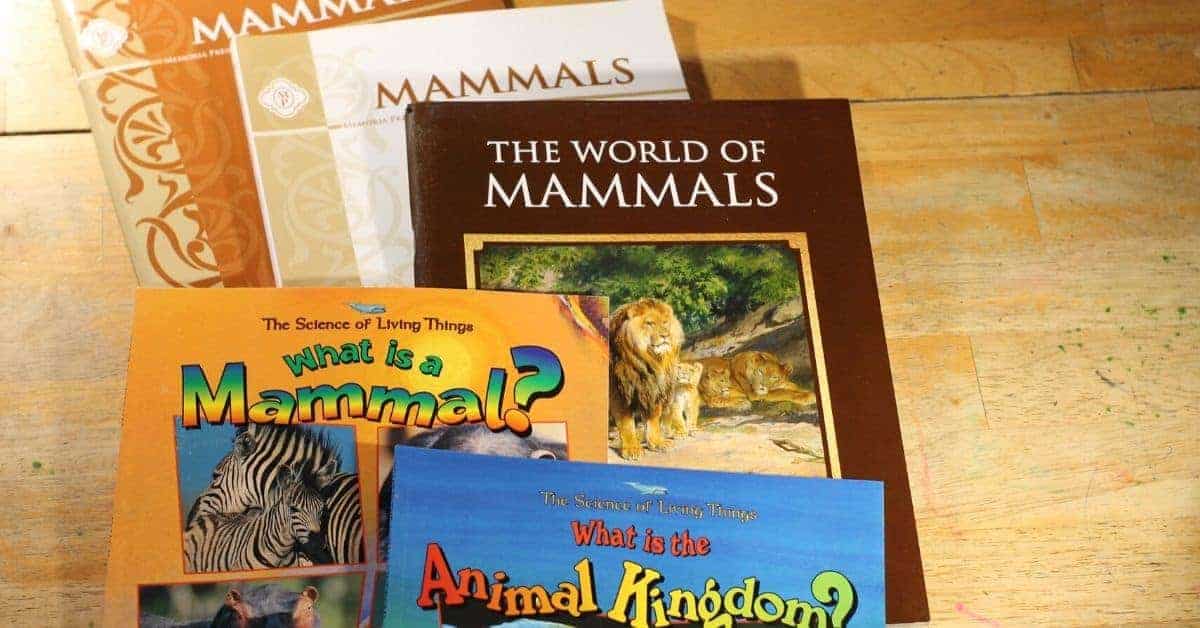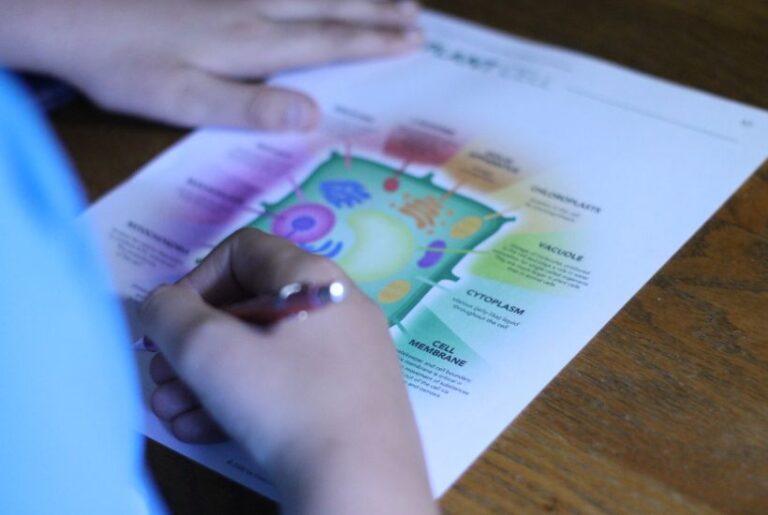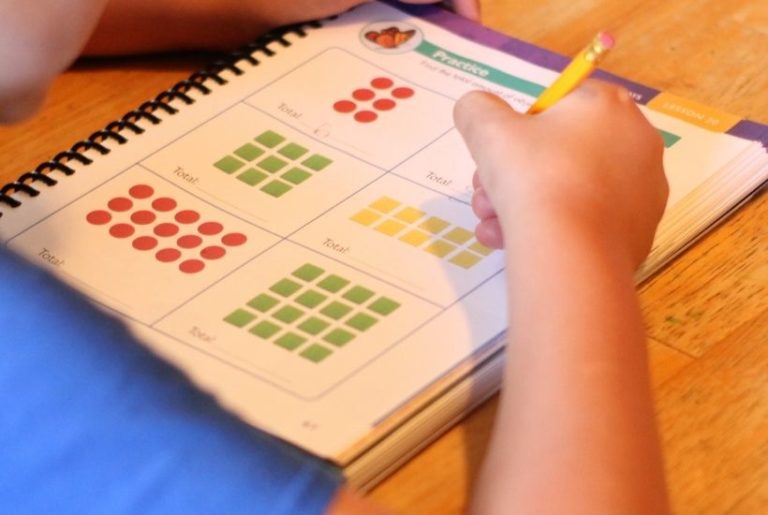Memoria Press Mammals Review
This post may contain affiliate links. For more information, please read my disclosure policy.
Here’s a review of Memoria Press Mammals.
I received the Mammals Set free in exchange for a review. These are my honest opinions and I was not required to post a positive review.
Are you looking for a way to study science and nature at the same time?
Then you need to take a closer look at Memoria Press Mammals curriculum!
Memoria Press teaches science before high school in a unique way. Instead of introducing kids to concepts in biology, earth science, astronomy, chemistry, and physics, Memoria Press has two different goals.
- First to introduce children to nature by teaching them about the various parts: such as mammals, birds, insects, and trees.
- Second to give children a narrative account of how science developed over the years.
This combination gives children both an appreciation of nature and intimate knowledge of the world around them.

What’s Included in Memora Press Mammals?
Memoria Press Mammals includes five different books. Two of these books are from the series: The Science of Living Things.
What Is the Animal Kingdom is a 32-page children’s book that introduces children to the animal kingdom. It gives kids a quick overview and background information to understand how mammals are different from other living creatures. It’s used at the beginning of the course.

What Is a Mammal is used throughout the year and walks children through the different types of mammals by category.
The World of Mammals is published by Memoria Press. While What Is a Mammal gives a quick overview of mammals, The World of Mammals gives detailed information without overwhelming kids with obscure facts.

The Student Guide is your child’s workbook. Like the Teacher Guide, you are told what topics to read in the various books. Children have places to draw pictures of different mammals such as moles and shrews. There’s a review of the information children should retain from the lesson at the end of each lesson. And there are questions for children to answer.

Mammals Teacher Guide includes a quick overview of teaching guidelines, the answer key to the student guide (which is most of the book), quizzes, tests, and answers to quizzes and tests. It also includes what sections of the different books are to be read at the beginning of each lesson.
The teacher and the student guide align by page number which I love! This means that lesson 20 begins on p. 51 in both books. And the Teacher Guide answer key is identical to the Student Guide except that the answers to the different questions are given.
What Kids Learn
Memoria Press Mammals actually begins by studying the animal kingdom. First, you and your children take a look at what is an animal and quickly walk through the kingdoms of living things.
Then the different types of animals are introduced before you finally touch on what a mammal is and how mammals are different from the other animals.
It’s a great approach! Kids get a quick overview of what mammals are and how they’re different from other living creatures before diving into the nitty-gritty of details.
Then you begin studying the different types of mammals:
- Monotremes
- Marsupials
- Insectivores
- Chiropterans
- Edentates
- Lagomorphs
- Hyraxes and the Aardvark
- Rodents
- Ungulates
- Elephants
- Carnivores
- Cetaceans
- Primates
And kids learn quite a bit about each different group. They learn what types of animals fall into each category, where the animals live, what physical features they have, what they eat, among many other details. And children also have the opportunity to draw the mammals in their student notebooks.

How Memoria Press Mammals is Taught
Memoria Press Mammals has a simple lesson plan.
Each lesson begins with a reading assignment. You’re told what pages you need to read to your child or have your child read to themselves.
Once the reading assignment is completed, your child then has a series of questions to answer. These questions include general questions about the group as a whole as well as specific questions about specific types of animals.
As an example in Edentates, children will answer questions about what mammals are edentates and what edentate means. Then they’ll answer questions specifically about anteaters, sloths, armadillos, and pangolins.
You have several options for answering the questions.
Usually, the kids will write their answers in the student guide. However, you can also have the kids dictate their answers and write the answers in the guide for them. Or you can use the questions as discussion starters and do everything orally.
I use a combination of having my kids write their answers in the student guide and having them dictate their answers to me. It depends upon the child’s writing ability.
The lessons conclude by having children draw an animal or part of an animal that was studied.
Plus there’s a quick review of the lesson at the very end. The reviews are awesome! Each review gives a quick overview of what was learned in the lesson. And if you review all the lessons on a daily or weekly basis, they give you a chance to review the information you’ve learned throughout the year.
There are no projects, demonstrations, or experiments included in the lessons, which is perfect for families who are tight on time, and moms who loathe messy projects.
Just read, answer the questions, and review the information!
So if you’re looking for an excellent science curriculum that includes nature study, take a good look at Memoria Press’ Mammals Set. It’s an excellent curriculum your kids will love!
More Information









